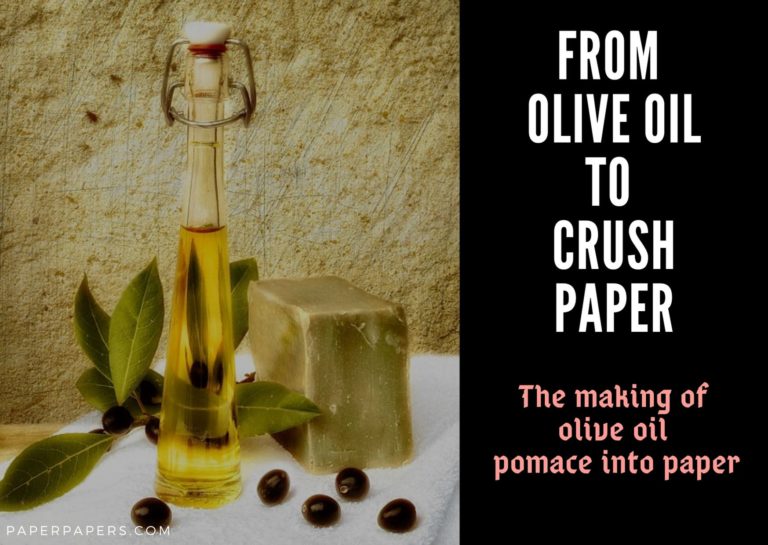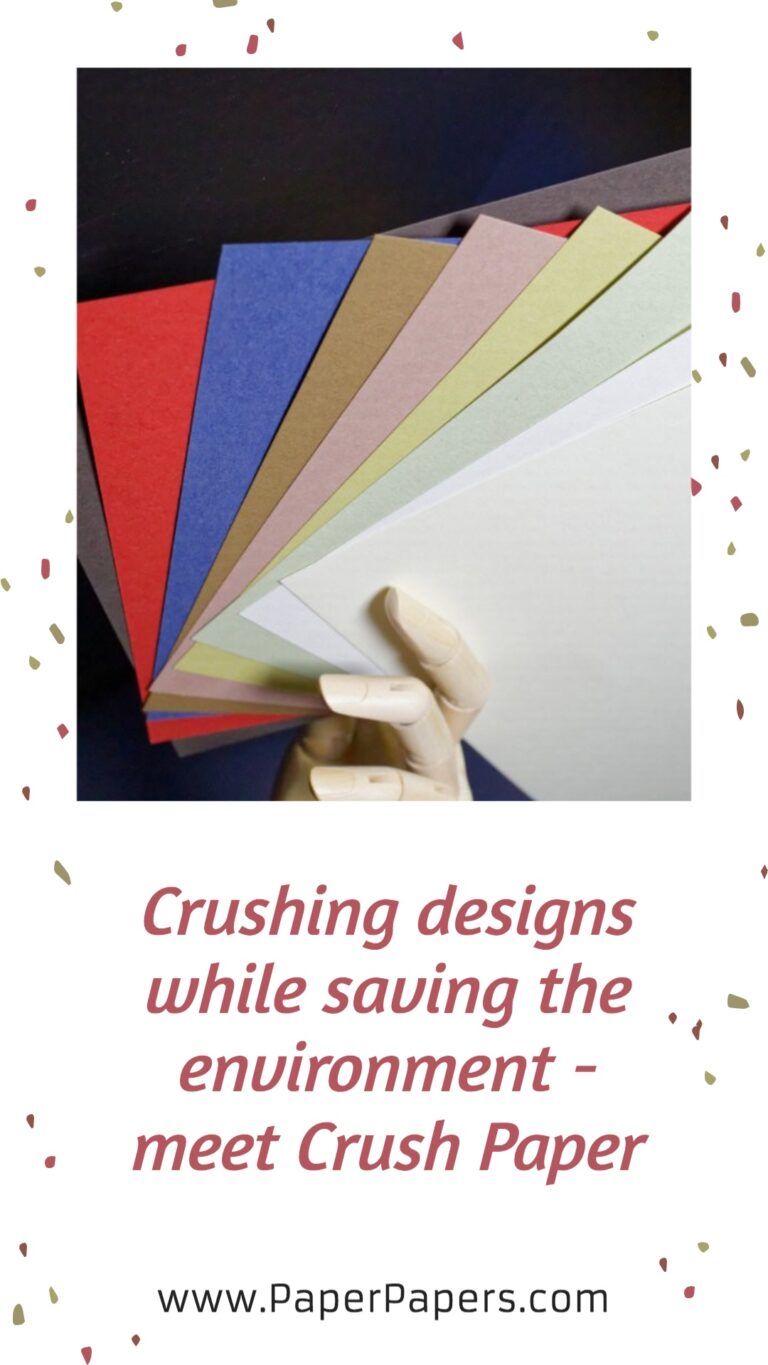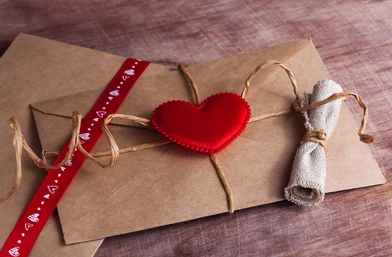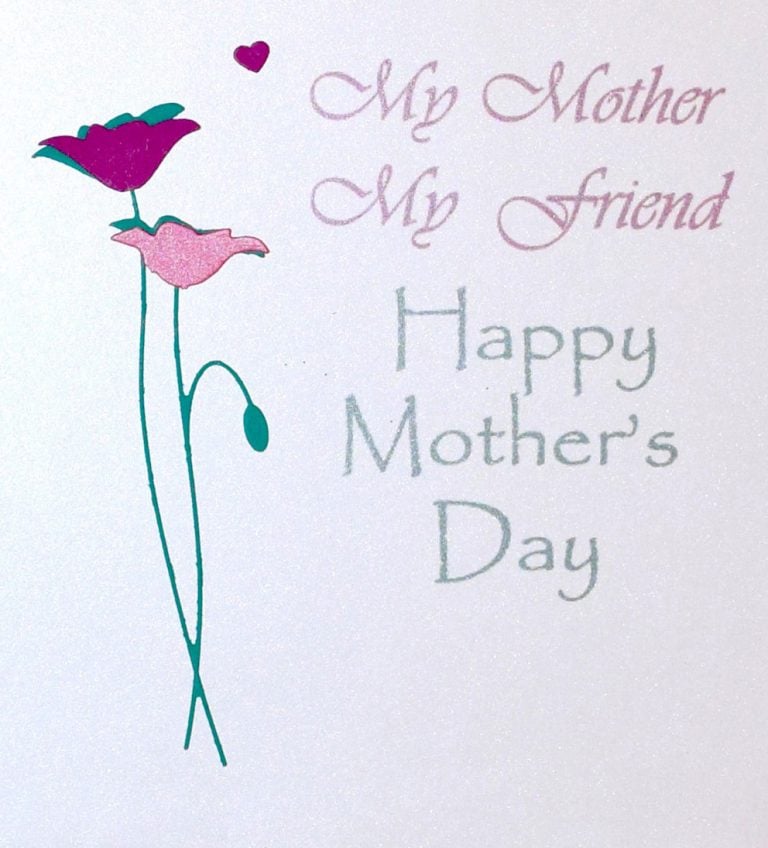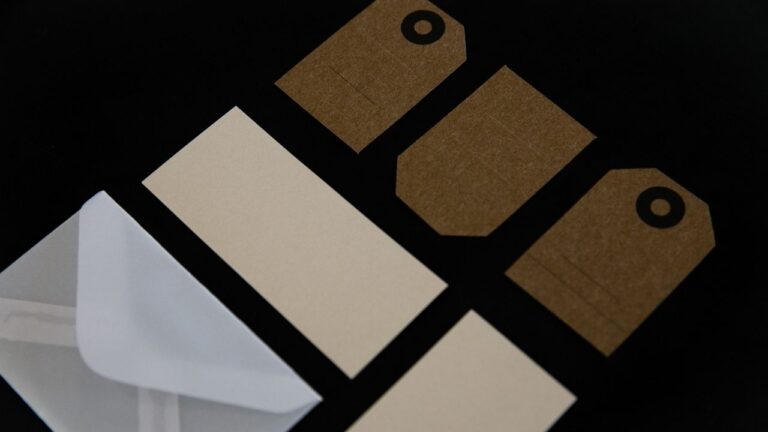The Ultimate Guide to Envelope Sizes (Dimensions & Uses)
When planning a mailing or invitation, choosing the right envelope size is crucial. Envelopes in the United States come in a variety of standard envelope sizes and styles. Each size has specific dimensions and common uses.
In this comprehensive guide, we’ll break down the most popular U.S. envelope sizes: Commercial, Announcement, Catalog, and Baronial. We will provide an easy-to-read size chart (in both inches and millimeters) and explain the typical uses for each size.
We’ll also cover USPS mailing guidelines, including which envelope sizes are machinable with standard postage and which might require extra postage.
Finally, we’ll suggest helpful links to find the exact envelope sizes you need.
Envelope Size Categories & Charts
Understanding Envelope Sizes
Choosing the correct envelope sizes is essential for both aesthetics and functionality.
Different sizes serve various purposes, from business correspondence to personal invitations.
Knowing the right size can enhance your communication.
U.S. envelopes are broadly categorized by style. The four main categories we’ll focus on are:
- Commercial envelopes – standard business letter envelopes (e.g. #10, #9, etc.).
- Announcement envelopes (A-style) – used for invitations, greeting cards, and social stationery (e.g. A7 for 5″×7″ cards).
- Catalog and Booklet envelopes – large envelopes for documents, catalogs or brochures (e.g. 6×9, 9×12 inches).
- Baronial envelopes – formal invitation envelopes with pointed flaps (often used for traditional stationery or wedding invites).
Below, we provide size charts for common envelope sizes in each category.
The dimensions are listed in inches (in) and millimeters (mm).
Remember that the insert (paper or card) should be slightly smaller than the envelope’s listed dimensions for a comfortable fit.
Commercial Envelopes (Business Envelopes)
Commercial envelopes, also known as business envelopes, are designed for everyday correspondence.
They are typically long and thin, sized to fit standard paper folded into thirds or halves.
The most ubiquitous is the #10 envelope, which holds an 8½″×11″ letter folded in thirds.
Commercial envelopes often have options like windows for pre-printed addresses to show through.
They come in common colors like white or manila.

Common uses for commercial envelopes include business letters, invoices, statements, checks, and any tri-folded documents.
Many companies use #10 envelopes for outgoing mail. They often enclose a #9 envelope as a return envelope for replies.
Many companies use #10 envelopes for outgoing mail and enclose a #9 envelope as a return envelope for replies.
Below is a size chart for common Commercial envelopes:
| Envelope Size | Dimensions (inches) | Dimensions (mm) | Typical Use |
|---|---|---|---|
| #6 3/4 (Personal) | 3.625″ × 6.5″ | 92 × 165 mm | Small personal or check envelope; often used for short letters or checks. |
| #7 3/4 (Monarch) | 3.875″ × 7.5″ | 98 × 191 mm | Monarch – often used for executive stationery or folded personal letters. |
| #9 (Return) | 3.875″ × 8.875″ | 98 × 225 mm | Return envelope to fit in #10 (reply mail); also used for personal checks. |
| #10 (Standard Business) | 4.125″ × 9.5″ | 105 × 241 mm | Standard business letter envelope (fits tri-fold US Letter paper) |
| #11 | 4.5″ × 10.375″ | 114 × 263 mm | Slightly larger variant for thicker or unfolded content (less common). |
| #12 | 4.75″ × 11″ | 121 × 279 mm | Larger business envelope for legal documents or thicker enclosures. |
Notes: The #6 3/4 and Monarch (#7 3/4) are smaller business envelopes sometimes used for personal correspondence or checks.
#9 envelopes are designed to nest inside #10 envelopes – for example, businesses include a #9 envelope as a pre-addressed return envelope for payments or forms, since it fits perfectly inside a #10.
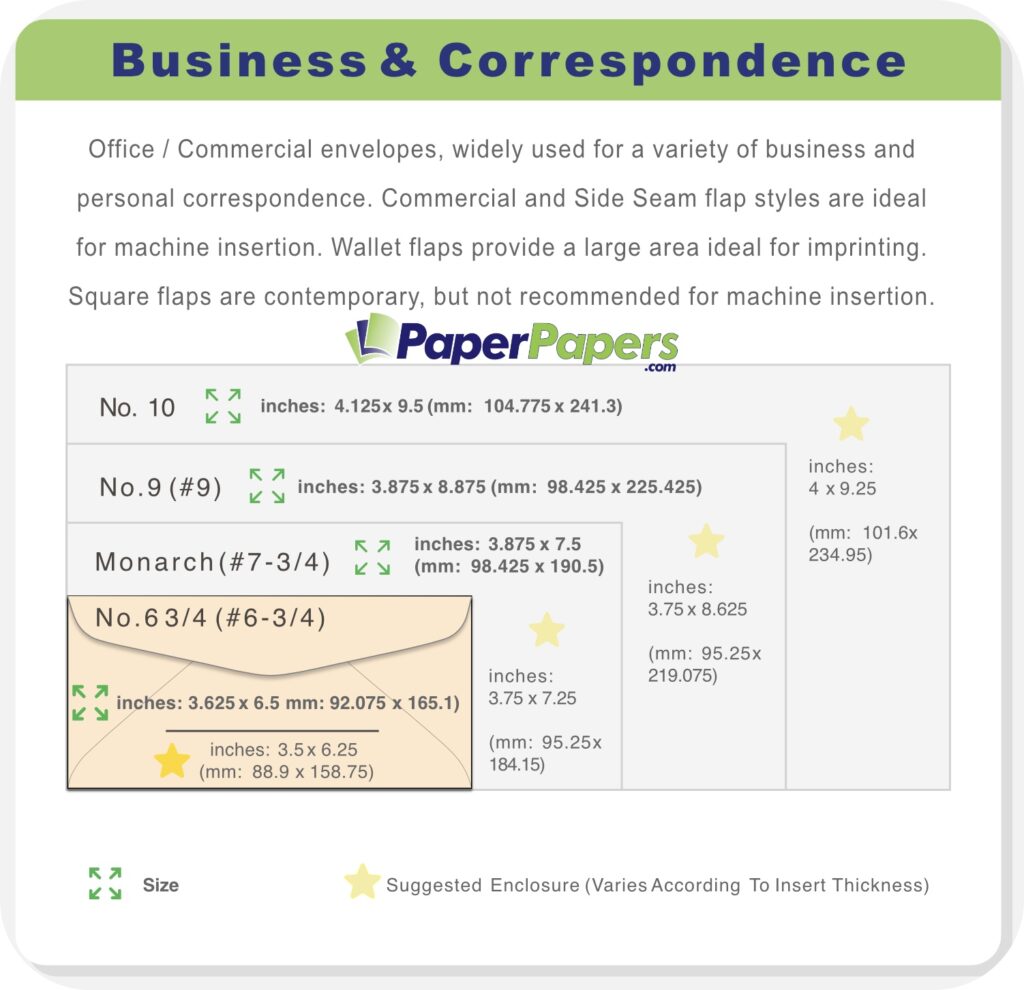
Announcement Envelopes (A-Style, Invitation Envelopes)
Announcement envelopes (A-style) are often referred to by “A” numbers (A1, A2, A6, A7, etc.). They feature a square flap and usually have side seams. A-style envelopes are popular for social stationery: greeting cards, invitations, announcements, photographs, and thank-you notes.
Each A-size corresponds to a typical insert size (usually a card or folded piece of paper):
- A7 envelopes (5¼″ × 7¼″) are one of the most popular, since they perfectly fit a 5″×7″ greeting card or invitation – a common size for wedding invites, holiday cards, and announcements. (Fun fact: A7 is sometimes called “5×7 envelope” or “Lee” envelope – on PaperPapers it’s listed as 7 Bar / Lee, indicating it’s equivalent to a 7 Bar baronial in dimensions.)
- A2 envelopes (4⅜″ × 5¾″) fit smaller note cards (up to 4¼″×5½″, often used for RSVP cards, thank-you notes, or quarter-folded sheets).
- A6 envelopes (4¾″ × 6½″) are commonly used for 4″×6″ postcards, photos, or invitations (such as save-the-date cards). This size is great for mailing 4×6 photographs or greeting cards with a bit of extra room.
- A9 envelopes (5¾″ × 8¾″) are used for larger greeting cards or half-folded letters. For example, they can hold a 5½″×8½″ invitation or two 5″×7″ photos. A9 is sometimes chosen as an outer envelope to hold a smaller A8 or A7 envelope and invitation ensemble.
- A1 envelopes (3⅝″ × 5⅛″) – also known as 4 Bar envelopes in the industry – are the smallest announcement envelopes and are often used for RSVP or reply cards that accompany a larger invite (A1 / 4-BAR Envelopes – What is an A1 Envelope?). USPS note: A1 (4 Bar) is the smallest mailable size for a letter – envelopes smaller than 3.5″×5″ are not mailable by USPS (A1 / 4-BAR Envelopes – What is an A1 Envelope?) (Sizes for Letters | Postal Explorer).
When it comes to envelope sizes, understanding the differences between them can help you make informed decisions. Each style has specific envelope sizes that cater to different needs.
When it comes to envelope sizes, understanding the differences between them can help you make informed decisions.
Each style has specific envelope sizes that cater to different needs.

Here’s a chart of common Announcement envelope sizes:
| Envelope Size | Dimensions (inches) | Dimensions (mm) | Fits Paper/Card Size |
|---|---|---|---|
| A1 (4 Bar) | 3.625″ × 5.125″ | 92 × 130 mm | 3½″×5″ RSVP or reply cards (small invites) (A1 / 4-BAR Envelopes – What is an A1 Envelope?). |
| A2 | 4.375″ × 5.75″ | 111 × 146 mm | 4¼″×5½″ note cards, thank-you cards. |
| A6 | 4.75″ × 6.5″ | 121 × 165 mm | 4″×6″ photos, postcards, invitations. |
| A7 | 5.25″ × 7.25″ | 133 × 184 mm | 5″×7″ invitations, greeting cards (A7 Envelopes Comprehensive Guide for Every Need |
| A9 | 5.75″ × 8.75″ | 146 × 222 mm | 5½″×8½″ invitations, 5″×7″ photos (with room). |
| A10 | 6″ × 9.5″ | 152 × 241 mm | 5¾″×9¼″ or 6″×9″ cards, larger announcements. |
Notes: The #6 3/4 and Monarch (#7 3/4) are smaller business envelopes sometimes used for personal correspondence or checks. #9 envelopes are designed to nest inside #10 envelopes, often included as a pre-addressed return envelope.
Baronial Envelopes (Pointed Flap Envelopes)
Baronial envelopes are another style of social envelope, traditionally used for formal invitations, announcements, and greeting cards.
They are similar in purpose to A-style envelopes but have a couple of key differences in construction:
- Flap shape: Baronial envelopes have a deep, pointed flap (sometimes called a triangle flap) that gives a classic, elegant look (often associated with wedding invitations or formal greeting cards).
- Seams: They usually have diagonal seams that meet under the pointed flap, as opposed to the side seams of announcement envelopes. This can make baronials a bit more traditional or formal in appearance.
Because announcement and baronial envelopes can share the same dimensions for the envelope pocket, the distinction is mostly in style. For example, a 5½ Bar envelope has similar dimensions as an A2 envelope, but the flap style differs.
Because announcement and baronial envelopes can share the same dimensions for the envelope pocket, the distinction is mostly in style. For example, a 5½ Bar envelope is exactly the same size as an A2 envelope (4.375″ × 5.75″); the only difference is that a 5½ Bar typically has a pointed flap (baronial style) whereas an A2 has a square flap (Announcement Size Envelopes – VISUAL GUIDE). Similarly, a 4 Bar envelope (Baronial) is the same size as an A1 (Announcement) envelope – 3.625″ × 5.125″ – but the 4 Bar will usually have that traditional pointed flap (A1 / 4-BAR Envelopes – What is an A1 Envelope?). Many envelope suppliers (including PaperPapers) use the terms interchangeably for those sizes, specifying the flap style in the product details.
Baronial envelopes are commonly used for things like wedding invitations (often the larger sizes), formal holiday cards, or response cards (the smaller 4 Bar is very popular for RSVP envelopes in wedding invitation sets). Their classic look is well-suited for anything requiring an elegant presentation or handwritten notes on social stationery.
Here are a few standard Baronial envelope sizes (and their equivalents):
| Envelope Size | Dimensions (inches) | Dimensions (mm) | Equivalent A-Size | Common Uses |
|---|---|---|---|---|
| 4 Bar (Baronial) | 3.625″ × 5.125″ | 92 × 130 mm | A1 size (3⅝″ × 5⅛″) (A1 / 4-BAR Envelopes – What is an A1 Envelope?) | RSVP cards, small informal notes. |
| 5½ Bar (Baronial) | 4.375″ × 5.75″ | 111 × 146 mm | A2 size (4⅜″ × 5¾″) (Announcement Size Envelopes – VISUAL GUIDE) | Invitations, greeting cards (quarter-fold). |
| 6 Bar (Baronial) | 4.75″ × 6.5″ | 121 × 165 mm | A6 size (4¾″ × 6½″) | Smaller invitations, thank-you cards, photos. |
Baronial envelopes are typically used for formal invitations and come in various envelope sizes that reflect their elegance.
Notes: Some other baronial sizes include 5 Bar (slightly smaller than 5½ Bar at ~4⅛″ × 5½″) and 7 Bar. In fact, what many call a “A7 envelope” (5¼″ × 7¼″) is essentially a 7 Bar envelope in baronial terms; you might see it referred to as Baronial 7 (Lee) on certain sites (Bulk Business Envelopes | Business Letter Envelopes | Commercial Envelopes). In practice, A7 and 7 Bar are used interchangeably for the 5¼″ × 7¼″ invitation envelope, with the flap style (square vs pointed) being the only difference. Baronial envelopes, with their pointed flaps, convey a bit more formality – think engraved wedding invites or high-end greeting cards. If you prefer that style, you can often find the baronial version of any given size. For example, PaperPapers offers both announcement envelopes (square flap) and baronial envelopes (pointed flap) in sizes like A2/5½ Bar and A7/7 Bar to match your preference.
Catalog & Booklet Envelopes (Large Envelopes for Documents)
Not all mail is a small card or letter – sometimes you need to send full-size documents, booklets or catalogs, and you’d rather not fold them. Catalog and booklet envelopes are large-format envelopes designed for just that purpose. They are typically measured by the envelope’s outside dimensions in inches (common sizes are named by dimensions, like 6×9, 9×12, 10×13). These envelopes come in two main styles:
- Catalog envelopes: Usually open on the short side (the smaller side of the rectangle) with a flap. This orientation (also called open-end) is good for thick stacks of papers or catalogs – you drop the contents in from the top. Catalog envelopes often have center seams for strength (US Envelope Sizes Including Commercial, Announcement & Catalog Sizes), and they may have clasp closures (the metal clasp) for interoffice use, though clasped ones aren’t ideal for machine mailing without extra steps (more on that later).
- Booklet envelopes: Open on the long side (the larger side of the rectangle) with a wide flap, known as open-side style. This makes it easier to insert items like booklets, brochures, or stacks of paper without bending them as much. Booklet envelopes typically have side seams.
Both styles serve similar purposes, and many envelope suppliers group them together. For example, PaperPapers’ Catalog/Booklet Envelopes category includes a range of sizes available in either open-end or open-side format. When ordering, you can usually choose the flap orientation you prefer.
Common catalog/booklet envelope sizes and their uses:
As you explore the world of envelope sizes, remember that the size you choose can impact the overall presentation of your mailing.
- 6″ × 9″ envelope – This is a smaller large-envelope that can hold a letter-size paper folded in half (5½″ × 8½″) or a stack of A7 invitations, etc. It’s often used for mailing brochures, small catalogs, or half-folded documents. Notably, a 6×9 envelope is still within the standard letter-mail size limits for USPS, so it can mail at regular First-Class letter rates (provided it’s under the weight/thickness limit) (Recap: First-Class Mail Letters). It’s a versatile size for direct mail campaigns as well.
- 9″ × 12″ envelope – This is the go-to for mailing full sheets of paper without folding. An 8½″×11″ sheet (US Letter) or even A4 paper fits flat inside a 9×12. This size is perfect for presentations, reports, certificates, magazines, or any documents that you want to arrive crease-free. A 9×12 is a very common “catalog envelope” (often seen in the classic manila envelope color). It’s also a common size for sending marketing materials and portfolios.
- 10″ × 13″ envelope – A slightly larger envelope for thicker stacks of letter-size paper or larger formats. Use this if you need to send many pages together, or odd-sized documents up to about 9½″ × 12½″. It provides a bit more room than 9×12. For example, some oversized magazines or art prints might go in a 10×13. Like the 9×12, this is considered a “large envelope” (flat) for mailing purposes.
And there are even bigger sizes (such as 12″ × 15″ or 11″ × 17″ envelopes) used occasionally for large artwork, legal documents, or blueprints – but those are less standard. Envelope size chart, below is a quick reference chart for the most common catalog/booklet envelopes:
| Envelope Size | Dimensions (inches) | Dimensions (mm) | Common Use Cases |
|---|---|---|---|
| 6 × 9 | 6″ × 9″ | 152 × 229 mm | Mailing letter paper folded in half, newsletters, small catalogs, half-sheet flyers. (Can be mailed at letter rate if under ¼″ thick.) |
| 9 × 12 | 9″ × 12″ | 229 × 305 mm | Mailing full-size documents without folding (fits 8.5×11″ or A4 sheets flat); brochures, magazines. |
| 10 × 13 | 10″ × 13″ | 254 × 330 mm | Larger reports, multiple letter-size pages or catalogs, artwork, manuscripts; provides extra capacity. |
Whether you need catalog envelopes for sending booklets or large envelopes for documents, understanding envelope sizes ensures your materials are presented professionally.
Notes: These envelopes are often available in heavier paper stocks (for durability) and in the familiar manila (light brown) color, as well as white or other colors. The terms “catalog” and “booklet” simply refer to the flap orientation – when shopping, you might see 9×12 envelopes labeled as Open Side (Booklet) or Open End (Catalog). Choose based on how you prefer to insert materials. For example, if you are inserting a thick booklet, an open-side might be easier. If you are stuffing a stack of papers and want extra support on the sides, an open-end might feel more secure. Many 9×12 envelopes come with optional clasps or self-sealing strips. Just remember, if you plan to mail an envelope with metal clasps, the USPS will consider it non-machinable unless you tape the clasps down or pay extra (coming up next: mailing guidelines).
Notes: These envelopes are often available in heavier paper stocks for durability and in familiar colors. The terms “catalog” and “booklet” refer to the flap orientation.
Choosing the right envelope also means considering postal regulations.
The USPS has specific size and aspect ratio requirements for envelopes to be processed at standard letter rates.
- Minimum and Maximum Sizes (for Letter Rate): To mail at a First-Class letter rate (one Forever Stamp, if under 1 oz, for example), your envelope must be rectangular and at least 3½″ high × 5″ long (and 0.007″ thick). It can be no larger than 6⅛″ high × 11½″ long and ¼″ thick (Sizes for Letters | Postal Explorer). Envelopes smaller than the minimum (such as tiny RSVP envelopes under 3.5″×5″) are non-mailable. Pieces larger than the max are considered flats (large envelopes) or packages. For instance, a standard #10 (4⅛″ × 9½″) easily meets the requirements, and even a 6×9 envelope (6″ × 9″) is within the letter-size limit (Recap: First-Class Mail Letters). But a 9×12 envelope exceeds 6⅛″ in height, so it will fall into the “large envelope (flat)” category – requiring higher postage than a letter. (Flats are mailable up to 12″ × 15″ × ¾″ thick, beyond which it becomes a package.)
- Aspect Ratio (Shape): The envelope’s length divided by height must be between 1.3 and 2.5 for machinable letters (201 Quick Service Guide | Postal Explorer). This means standard envelopes that are longer than they are tall (rectangular) are fine. Square envelopes or very narrow/tall envelopes fall outside this ratio and will be classified as non-machinable (incurring an extra surcharge) (201 Quick Service Guide | Postal Explorer). Example: A 5″ × 5″ square wedding invitation envelope, or an oddly shaped greeting card envelope, will cost more to send because the postal sorting machines can’t handle it like a normal letter (Sizes for Letters | Postal Explorer).
- Machinable vs Non-Machinable: For an envelope to go through automated sorting without surcharge, it should be rectangular, flexible, and evenly thick. If it has elements like clasps, strings, or buttons, or if it’s too rigid, or if the address is not parallel to the long side, it will be considered non-machinable (201 Quick Service Guide | Postal Explorer). Non-machinable letters require additional postage (currently, a non-machinable surcharge on top of the regular stamp). Common causes: square shape, rigid invitation with a wooden ornament, envelopes with metal clasps or wax seals, or very thick letters that can’t bend. If you’re sending something like a square greeting card, be prepared for the extra $0.30+ surcharge (Sizes for Letters | Postal Explorer). Likewise, if you use a catalog envelope with a metal clasp, you should either remove/tape down the clasp or expect to pay the non-machinable fee.
- Weight and Thickness: Standard First-Class letters can weigh up to 3.5 ounces (approx 99 grams) for stamp usage (above that, you move into flats or parcel rates) (201 Quick Service Guide | Postal Explorer). So you can put a few pages in a #10 envelope and still be under 1 ounce (the usual limit for one stamp), or even up to 3.5 oz with additional ounce postage. If you’re stuffing a heavier wedding invitation in an A7 envelope, check the weight – you might need extra ounce stamps. Also, envelopes that are too thin (flimsy) or too thick can be non-machinable. As a rule, ensure the envelope is at least 0.007″ thick (which is about the thickness of a regular index card – most envelopes meet this) (201 Quick Service Guide | Postal Explorer), and not over ¼″ thick (beyond that is a package).
- First-Class Flats: If your envelope is larger than the letter dimensions but within 12″ × 15″, it will be sent as a First-Class Flat (if you use First-Class postage). Flats (large envelopes) have their own postage rates – higher than letters, but still cheaper than parcels. For example, a 9×12 envelope with a few sheets might cost as a 2-ounce large envelope. Keep in mind flats must also be flexible and uniformly thick to avoid parcel rates.
- Tip – Address Orientation: Always address your envelopes with the longer side horizontal. USPS machinery expects the address to be parallel to the longer dimension of the envelope (201 Quick Service Guide | Postal Explorer). If you were to address a catalog envelope in portrait orientation (with the flap at top and address turned 90°), it could be non-machinable. For square envelopes, it doesn’t matter since length = height, but they’re non-machinable regardless due to aspect ratio.
- Extra Services: Odd sizes may require hand sorting, but you can still send them via USPS. Just add the non-machinable surcharge or use hand-cancellation (often done for wedding invites to avoid machine damage). Always verify postage for unusual envelopes at the post office if you’re unsure – it’s better than having your beautiful invitation returned for insufficient postage!
In summary, most standard envelopes (#10, A7, etc.) meet USPS machinability standards as long as you use them as intended.
Issues mainly arise with square envelopes, oversized flats, or envelopes with clasps/odd closures.
Choosing the Right Envelope (Conclusion & Tips)
With the many sizes and styles available, here are some parting tips to help you choose the perfect envelope for your needs:
- Match the Envelope to the Contents: Determine what you’re mailing (a letter, a greeting card, a stack of documents, etc.) and choose an envelope that fits those dimensions. Use our charts above to find the right size. For example, a tri-fold business letter goes in a #10 envelope, a 5″×7″ photo or invite goes in an A7, and an 8½″×11″ document goes in a 9×12.
- Consider the Presentation: Announcement (A-style) envelopes with square flaps offer a contemporary look and lots of color options – great for invitations and cards. Baronial envelopes with pointed flaps give a classic, elegant touch for formal events. If you want to impress recipients even before they open the envelope, the style matters.
- Plan for Postage: If you’re leaning towards an unusual envelope (like a square invite or a bulky mailer), remember the USPS guidelines. You can certainly use those envelopes – just budget for a bit of extra postage. A standard Forever Stamp covers most standard letters (up to 1 oz, machinable) in the sizes we listed. Anything outside those conditions (e.g., 2 oz wedding invite, square envelope, large 9×12 mailer) will require additional postage. It’s a good habit to do a test mailing: assemble one complete piece and have it weighed/measured at the post office to confirm the rate.
- Quality and Finish: For special occasions or professional mailings, the envelope’s paper quality can make a difference. Heavier stock envelopes feel sturdy and can protect contents better. You might choose linen-textured announcement envelopes for wedding invites, or a Tyvek or tear-proof envelope for important legal documents. PaperPapers, for instance, offers a range of finishes – from cotton fiber envelopes for a luxe feel to economical white wove envelopes for everyday business use.
- Internal Sourcing: If you need envelopes, you can find virtually every size and style on our site. Browse our selection of Commercial Envelopes for business (#10s, window envelopes, etc.), Announcement Envelopes (A1 through A10 in many colors), Baronial Envelopes for pointed flap options, or large Catalog & Booklet Envelopes for documents. We even have an “Envelopes by Size” search to quickly find specific dimensions.
Final Thoughts: The envelope does more than just hold its contents—it makes the first impression. Whether you’re sending a formal business letter or a heartfelt invitation, the right envelope sets the tone, protects your piece, and ensures a smooth mailing experience.
One essential tip: choose your envelope size and confirm availability before designing your invitation, card, or mailer. It can be disheartening to finish a beautifully crafted piece only to find there’s no envelope to fit it properly. Planning ahead not only saves time but also helps ensure your final presentation is polished and professional.
Use this guide as a reliable reference whenever you’re unsure about which envelope to choose. With the dimensions, uses, and mailing insights outlined above, you’ll be able to select an envelope that meets your needs—both in function and in style.
Happy mailing, and may every envelope deliver with impact and intention. ✉️


